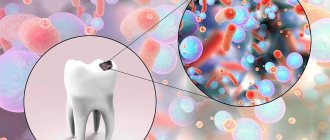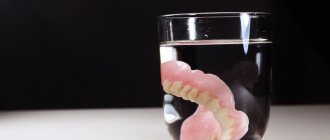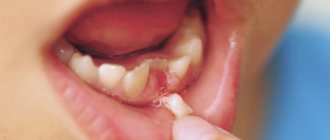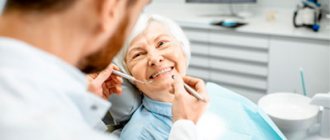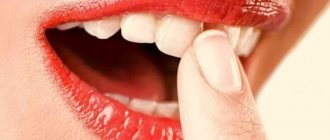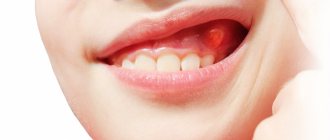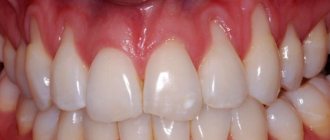Imagine a mouth with rotten teeth and the smell that comes from them, it is not difficult to guess how repulsive and unpleasant a person with such a problem looks. Bad teeth greatly spoil the impression of a person’s appearance, prevent him from communicating normally with other people, and disrupt his psychological state.
However, this problem is not only aesthetic. Dentists warn that rotten teeth cause arthrosis, polyarthritis, and disrupt the condition of the skeletal system. The products of decay and the microbes that provoke them are carried throughout the body with saliva and blood. A person begins to have problems with organs that, at first glance, have nothing to do with teeth. The infection gradually affects the bone tissue and can reach the brain.
What happens if you ignore the body’s signals, drown out the pain with pills, mask the smell with air fresheners? It may be possible to hide the negative symptoms for a while. However, as they accumulate, they will lead to the appearance of other and not only dental problems.
Causes of tooth decay. How to stop him?
To provide adequate treatment, the doctor must first determine the cause of the disease. Otherwise, the measures may turn out to be useless, the process will continue to develop. The causes of tooth decay are external and internal factors. Despite the fact that enamel is considered one of the most durable materials in the body, under unfavorable conditions it quickly deteriorates. As a result, microbes gain unhindered access to the inner, less protected part of the tooth.
To cope with this problem at the initial stage, one visit to the dentist is usually enough. He clears the cavity of affected tissue and closes it with a filling. However, simple neglect of their health and fear of the dental office make people postpone the visit. The result is deterioration of the teeth and their loss.
Consequences for the body
In addition to exclusively external troubles (repulsive appearance, unpleasant smell), which affect a person’s psychological state, it should be taken into account that tooth decay can negatively affect the body as a whole.
Doctors even trace the relationship of this disease with the unsatisfactory condition of the entire skeletal system. This can subsequently cause arthrosis and polyarthritis .
Pathogenic microbes, which invariably accompany decay, are spread by blood and saliva throughout the body. As a result, internal organs are affected or begin to malfunction, which at first glance are completely unrelated to the infection in the mouth. There is also a possibility that decay will spread to the bone that forms the jaw, and then the brain may also be affected.
When is a person to blame for having bad teeth?
Experts identify a number of causes of tooth decay, for which the patient himself is to blame. Knowing them, you can take timely measures to prevent the development of the disease. These reasons include:
- Smoking. Components released from tobacco disrupt metabolic processes in dental tissues. Due to this, their ability to resist adverse effects is sharply reduced.
- Alcohol, drugs. They negatively affect the functioning of the entire body, impair its protective functions and ability to recover.
- Poor nutrition. Lack of minerals and vitamins in food leads to weakening of the enamel. An excess of sweets, sour fruits, and berries contributes to the destruction of enamel.
- Unhealthy Lifestyle. Lack of physical activity, constant presence in dusty rooms, abuse of fatty, fried foods reduces the body's protective functions.
In addition, lack of or improper oral hygiene contributes to the formation of plaque. It becomes a source of food for microorganisms that gradually destroy teeth.
Victoria Beckham
Before achieving enormous popularity and position in society, Victoria Beckham could not boast of a perfect smile: discolored, uneven teeth with an irregular slope clearly did not correspond to her status as a star.
Probably, since then, David Beckham's wife has developed the habit of smiling less. One day, Beckham finally found a competent dentist - today Victoria smiles just as rarely, but her teeth are straight and beautiful.
Victoria Beckham and her smile
Negative factors beyond the patient's control
If a person does not smoke, engages in debate, and watches his diet, why do his teeth begin to rot? There may be several reasons for this:
- Bad ecology. Polluted air, poor quality water, an excess of some and a lack of other important components. Fluoride deficiency is often cited as the cause of dental problems.
- Heredity. If the parents had bad teeth or the mother did not visit the dentist during pregnancy, children often experience similar problems.
- Physiological features. Hormonal imbalance in adolescents during the growth period, in pregnant and lactating mothers.
Tooth decay is often a consequence of other diseases. Problems with periodontal tissues - gingivitis, periodontitis, periodontal disease - lead to the development of caries and cause tooth loss. If a purulent cyst forms near the root, the infection quickly spreads to the tooth. Often the deterioration of teeth is caused by diseases of the stomach, intestines, and thyroid gland.
What are the dangers for pregnant women?
During pregnancy, a woman's body experiences maximum stress. Decayed teeth, which are direct sources of infection, worsen the hard work of all systems not only of the mother, but also of the child.
Constant pain causes emotional stress and the release of certain hormones that affect the development of the psyche in children. Rotten crowns can lead to abnormal organ development, micronutrient deficiencies and poor fetal weight gain .
The main danger is that the products of decay of dental tissue stimulate the production of cytokines - substances that provoke contractions of the muscle tissue of the uterus and dilation of the cervical canal. This can cause destruction of the amniotic sac and premature birth.
That is why doctors insist on timely dental treatment. It is possible to eliminate pathologies that appear during pregnancy only during the second trimester.
But if an active or large-scale rotting process is detected, treatment can be carried out at an earlier date. Nowadays, for pain relief, pregnant women use such doses of effective drugs that cannot harm the fetus in any way.
Characteristic symptoms and stages of disease development
Dental problems manifest themselves in different ways. It depends on the degree of damage, the sensitivity of the body, and the number of problem areas. Tooth decay does not occur in just one day.
Dentists distinguish several characteristic stages, which are characterized by certain symptoms:
- Unpleasant smell. At first it is not too noticeable. Gradually, even during a conversation, the interlocutor feels a putrid “aroma”. Its source is pathogenic bacteria. They inhabit plaque that forms at the point of contact between the gum and tooth.
- Stains on the enamel. This is the next stage of the disease, when the damage spreads deeper and damages the enamel.
- Black areas. If they are located on the root, it is very difficult to notice them. To clarify the extent of the damage, an x-ray is taken.
- Formation of the cavity. A cavity forms in place of the black spot. Through it, food debris gets to the inside of the tooth. The tooth actively “signals” about the problem with painful sensations, reaction to hot and cold.
- Pulpitis develops. By not consulting a doctor in time, the patient allows inflammation to reach the pulp. Soft tissues containing blood vessels and nerves undergo rotting. It is accompanied by sharp, unbearable pain.
The decay process ends in different ways. If it starts from the top of the tooth, it gradually spreads to the root. After the nerve dies, the pain intensity decreases. If decay affects the root first, the tooth may fall out or have to be removed.
Treatment methods
Since the destruction of crowns can be caused by a wide variety of reasons, the stages of treatment are drawn up only after they have been identified. The entire process is based on the principle of complexity.
Therapy for rotten crowns includes the use of medications, dental surgery and folk remedies.
Medications
When teeth are rotting, medications are used that reduce the number of pathogenic bacteria. A good effect is obtained by rinsing the mouth with an aseptic solution of chlorhexidine gluconate .
In addition, fluoride treatment using special pastes or rinses. To reduce swelling of the gum tissue and partially relieve pain, use paracetamol, aspirin or ibuprofen .
When taking these drugs, it should be borne in mind that aspirin causes Reye's syndrome and is therefore contraindicated in people under 20 years of age. The complex provides general strengthening therapy with the prescription of vitamins. It is possible to add treatment with antibiotics prescribed by the doctor.
Dental intervention
For rotten teeth, the main therapy is to eliminate the source of infection. To do this, the dentist must treat the pathological areas in order to stop further destruction.
As a rule, this procedure follows a standard scheme:
- administration of application or infiltration type anesthesia;
- crown preparation;
- if the tooth is deeply damaged, then the canals are ground down to remove rotting tissue;
- removal of nerves and treatment of canals;
- filling.
If the degree of destruction is high, restoration work may be necessary. After the procedures, the dentist makes additional prescriptions: antibiotics, diet , etc.
Folk remedies
Photo: Chinese lemongrass
Traditional medicine is very diverse. Among them there are those that will help alleviate the symptoms of rotting. The most effective can be considered products based on plants, which can be easily purchased at any pharmacy:
- tea based on Chinese lemongrass (bark) . After brewing 1 tbsp. spoons 0.5 l. Boiling water must be drunk at least three times a day. This will slightly reduce inflammation and temporarily relieve pain;
- horsetail has the same effect , which must be taken in powder form at least twice a day. This plant strengthens tooth enamel well;
- an infused mixture of fennel, mint and horseradish root helps fight inflammation and soothe irritated soft tissue, which is especially important after dental procedures. To do this, you need to rinse your mouth with tincture three times a day;
- a decoction of rosemary, bay leaf and cinnamon is also used for rinsing . This product is an excellent antiseptic.
In order not to aggravate the situation, you should not self-medicate. In all cases, comprehensive treatment of rotten teeth should be carried out under the strict supervision of a specialist.
We have collected reviews and prices about laser teeth whitening in a separate publication.
In the following review you will read about the treatment of oral leukoplakia.
Here: https://zubovv.ru/detskaya-stomatologia/d-zubi/prorezyivanie-z/sroki-i-nyuansyi-molochnyih.html - a table with the timing of the eruption of baby teeth in children.
Why do teeth rot at the gums?
Caries near the gums and on visible parts of the tooth are no different.
The reasons for its occurrence are the same, but near the gums it is more difficult to identify and treat the disease. Therefore, patients usually consult a doctor at the stage of progressive pulpitis. Timely detection helps prevent the development of caries in the gingival region. To do this, you need to periodically visit the dentist, who will correctly assess the condition of the enamel and detect the development of caries in time. Experts call gum disease a common cause of its occurrence. Food debris that accumulates in the gum pocket promotes the development of bacteria. In addition, the disease can be caused by an incorrectly installed crown, poor hygiene, or changes in the composition of saliva.
Lindsey Lohan
Actress Lindsay Lohan made the world shudder in 2011 by revealing her yellowed teeth, damaged by caries. It was very difficult to recognize the star of family comedies in this state - many assumed that Lindsay's teeth had deteriorated due to her addiction to drugs and alcohol.
Lindsay Lohan's teeth, then and there
By February 2021, Lohan had sorted out her smile. The short video shows that the actress’s teeth have acquired a healthy appearance - however, this did not affect her career in any way.
What to do with a tooth that has rotted to the root?
If the root has rotted and treatment measures do not produce results, the tooth has to be removed. Loss of the upper part leads to the development of pathologies:
- the appearance of a cyst at the root apex;
- fracture or dislocation of the root;
- injury to the gums from a splinter;
- periodontal diseases.
A rotten root becomes a source of infection that spreads to nearby tissues.
In any case, the doctor chooses the treatment. If there is a high probability of negative consequences, removal will be carried out. To avoid this, it is recommended not to skip periodic dental checkups.
Johnny Depp
Before filming the film Pirates of the Caribbean: The Curse of the Black Pearl (2003), Johnny Depp wanted to decorate his teeth with gold caps - this would make it easier for him to take on the role of a sea robber. The producers of the film even had to ask the actor to remove some of the pads, as the actor clearly overdid it. After his high-profile breakup with Amber Heard, the actor smiles less often – and rightly so: even without gold caps, his teeth don’t look their best.
Johnny Depp and his gold teeth
A child’s teeth are rotting: to treat or not to treat?
Rotten teeth are in most cases a problem for adults. However, this process can affect baby teeth. Moreover, the path from the appearance of a small spot to a severe stage passes very quickly. The reasons for this phenomenon are the same as in adults. At the same time, we can identify characteristic factors that have a negative impact on children’s teeth:
- excessive love for sweets;
- insufficient oral hygiene;
- mother's dental problems during pregnancy.
It is impossible to stop rotting at home. You must contact your dentist immediately.
Preventive measures
Treating rotten teeth is not always a simple process. This often requires a long period of time. To avoid this, it is necessary to carry out the usual prevention, which consists of the following:
- Pay a lot of attention to oral hygiene. Teach your child to use special cleansers from early childhood. Don't forget that brushing your teeth twice a day is just the minimum requirement;
- Visiting the dentist should be carried out regularly, even in the absence of dental pathologies. Visits must be made at least once every six months;
- eat a balanced diet rich in nutrients;
- give up habits that are harmful to your body and an unhealthy lifestyle.
When the first spot of decay appears, contact your dentist. Only he will help you stop this process and qualitatively treat your teeth, which, with proper care, will last you a lifetime.
When are teeth actually rotten, and when are people mistaken and their problem is completely different? Watch the video:
If you find an error, please select a piece of text and press Ctrl+Enter.
Tags rotten teeth photos
Did you like the article? stay tuned
Caries on baby teeth
As a result of long-term research, scientists were able to identify the main cause of caries in baby teeth. It becomes: microorganisms transmitted to the child from the mother. Streptococcus gets to the baby through a kiss, through a pacifier licked by the mother, or shared cutlery. Microbes come from other people through these same routes. When teething, babies are especially vulnerable to streptococcus. In addition, lack of oral hygiene, poor diet, and the composition of saliva have a negative impact.
Dentists point out that regular use of baby formulas from a bottle with a high carbohydrate content creates ideal conditions for the development of bacteria. Getting your baby used to a cup and rinsing his mouth after eating helps reduce their negative effects.
previous post
Pin in a tooth: types and advantages of design
next post
Anna Paquin
In an interview, True Blood star Anna Paquin said that her imperfect smile is the last thing she worries about. The actress has a wide gap between her front teeth, but she is not going to change anything. In an interview, she stated: “It’s terribly annoying when someone asks me why I don’t fix the gap between my teeth!”
Anna Paquin and her scary teeth
Types of pathology
In dentistry, adentia is considered as a primary or secondary defect of the dentition.
- Complete congenital adentia is extremely rare, occurring in approximately 1% of cases.
- Partial secondary adentia is diagnosed in 45–75% of cases.
- Also, complete adentia occurs in 25% of people over 60 years of age.
Depending on the causes and time of occurrence of the pathology, dentists, as mentioned above, distinguish between congenital and secondary tooth loss, as well as edentia of temporary and permanent rows. True adentia is the absence of a tooth germ, and when adjacent crowns merge and there is a delay in their eruption, dentists speak of false adentia.
Taking into account the number of missing teeth, partial and complete edentia are distinguished. The first involves a deficiency of up to 10 units of dentition, usually the upper lateral incisors, second premolars and third molars. If more than 10 teeth are missing, doctors diagnose multiple adentia.
Ask a Question
Miley Cyrus
One of the most high-profile dental cases in Hollywood is that of Miley Cyrus. The girl became famous at the age of 11 thanks to her role in the Disney Channel teen series Hannah Montana. The viewer fell in love with her without looking back - even with her short and uneven teeth. By the age of 16, the actress decided to make global changes: apparently, the girl installed veneers, and now she has nothing to be ashamed of.
Miley Cyrus then and now
Disease prevention
Preventive measures to prevent the development of dental diseases and the formation of plaque should be applied from the moment the baby first starts teething. The risk of unpleasant problems occurring can be significantly reduced by the following simple measures:
- Gentle oral care. Infants up to one year old can clean their gums with a cotton pad soaked in a decoction of chamomile, string, oak bark or sage. Special silicone attachments are also widely popular, which adults put on their fingers and thus clean the baby’s oral cavity. From the age of two, children must be taught to brush their teeth with a brush and toothpaste, and it is also advisable to rinse the mouth after each meal.
- Proper nutrition. This does not imply following any diets, but the child’s nutritional system should be designed in such a way as to limit his intake of sweets, sugar, confectionery and increase the consumption of healthy natural products. Sweets from the store are an excellent substitute for candied fruits, fruits and dried fruits.
- Timely abandonment of pacifiers and bottles. With prolonged use of a bottle or pacifier, an incorrect bite develops, dependence on accessories appears, and a black plaque forms, which in dentistry is called “bottle caries.” You should not delay in weaning your child off devices that he no longer needs.
- Maintaining the immune system. It is important to ensure that even in winter, the child has enough vitamins to maintain healthy teeth and the body as a whole.
By following these simple recommendations, you will ensure your child’s dental health and the beauty of a child’s smile.
return to list of articles

